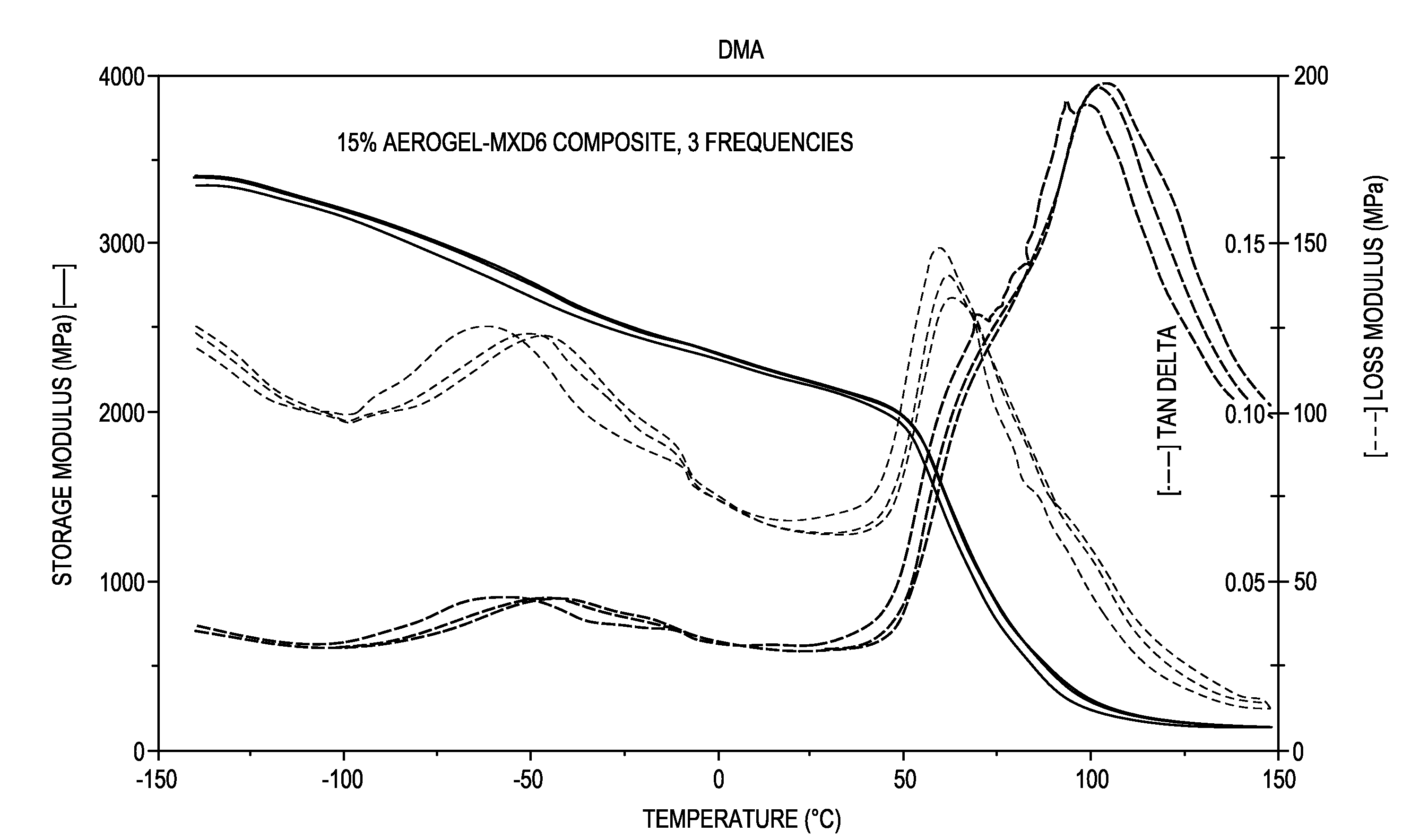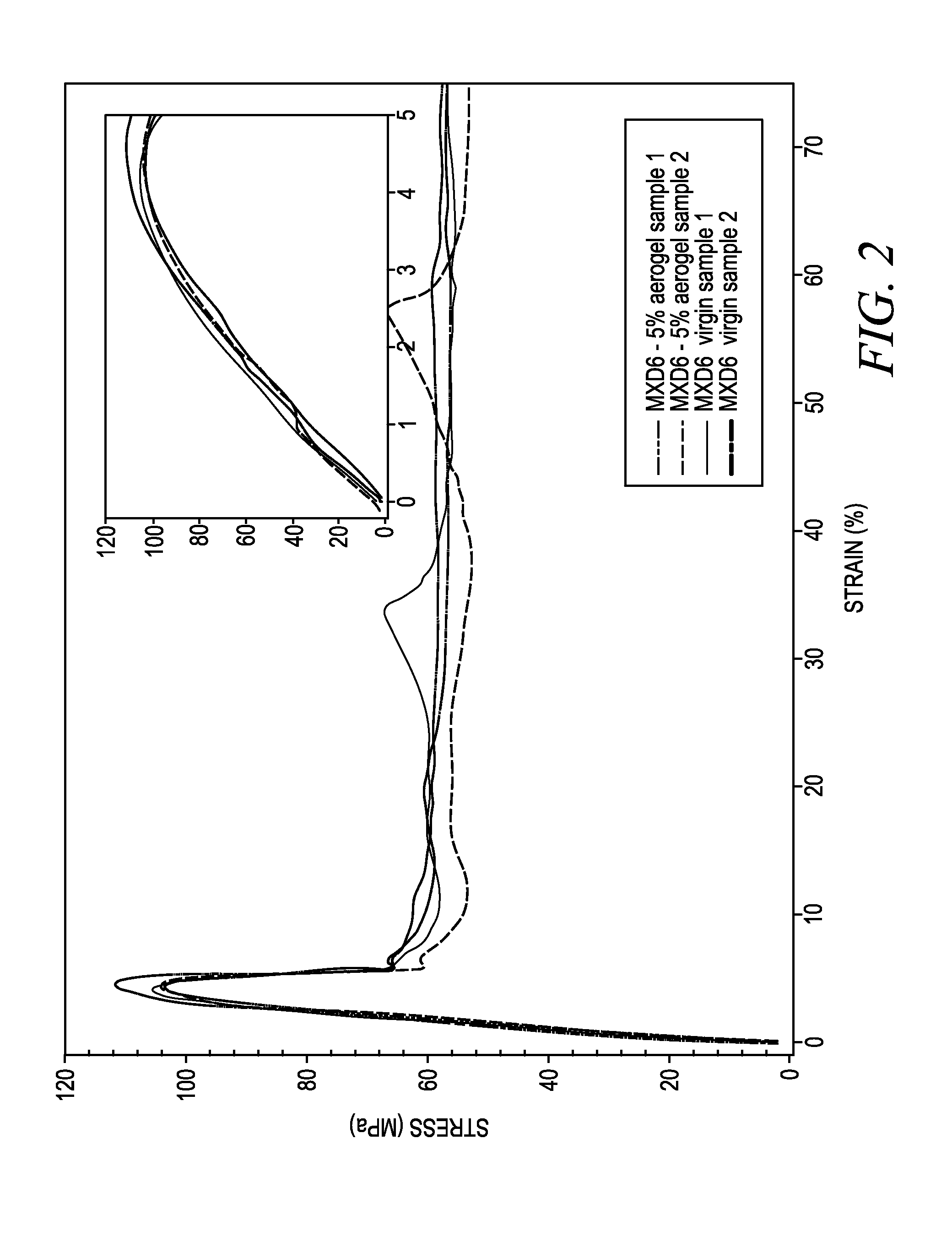Aerogel / Polymer Composite Materials
- Summary
- Abstract
- Description
- Claims
- Application Information
AI Technical Summary
Benefits of technology
Problems solved by technology
Method used
Image
Examples
example 3
[0088]Aerogel-MXD6 Composite. MXD6 (190 grams) was premixed with 10 grams of Cabot NANOGEL (800 micron). The dry mix was fed into the hopper, keeping temperature profiles and machine speeds identical to the virgin MXD6 in Comparative Example 1. The extruded material was collected using a take-up sheet operating at the appropriate rpm. 10% and 15% aerogel-MXD6 composites were produced under the same conditions using 180 and 170 grams of Mitsubishi MXD6 and 20 and 30 grams of Cabot NANOGEL, respectively.
example 5
[0090]Aerogel-ZYTEL composite. ZYTEL (190 grams) was mixed with 10 grams Cabot NANOGEL beads, 1 mm in size. The extrusion temperature profile zones were at 285, 287, 290, and 295° C., respectively. The feed hopper was operated at the appropriate rpm and a screw speed of 40 to 60 rpm. The extruded material was collected using a take-up roll operating at the appropriate rpm.
example 6
[0091]Aerogel-VERSIFY polyolefin composites. To fabricate the base material, virgin Dow VERSIFY 2300 pellets were fed into the hopper at the appropriate rpm. The temperature zones were 185, 195, 200, 205° C. The extruded material was collected using a take-up sheet operating at the appropriate rpm. In the 5% aerogel-VERSIFY composite, 190 grams of VERSIFY was premixed with 10 grams of Cabot NANOGEL. 10% aerogel-VERSIFY composite was produced under the same conditions with 180 grams VERSIFY and 20 grams NANOGEL, and the 15% aerogel-VERSIFY composite was produced under the same conditions with 170 grams VERSIFY and 30 grams NANOGEL.
[0092]VERSIFY 2300 is an extrusion grade polyolefin, a specialty propylene-ethylene copolymer.
PUM
| Property | Measurement | Unit |
|---|---|---|
| Temperature | aaaaa | aaaaa |
| Temperature | aaaaa | aaaaa |
| Temperature | aaaaa | aaaaa |
Abstract
Description
Claims
Application Information
 Login to View More
Login to View More - R&D
- Intellectual Property
- Life Sciences
- Materials
- Tech Scout
- Unparalleled Data Quality
- Higher Quality Content
- 60% Fewer Hallucinations
Browse by: Latest US Patents, China's latest patents, Technical Efficacy Thesaurus, Application Domain, Technology Topic, Popular Technical Reports.
© 2025 PatSnap. All rights reserved.Legal|Privacy policy|Modern Slavery Act Transparency Statement|Sitemap|About US| Contact US: help@patsnap.com



